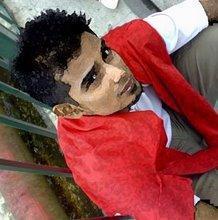
Christian Huygens was a Dutch physicist, mathematician, astronomer, and inventor who was the leading proponent of the wave theory of light. He also made important contributions to mechanics, stating that in a collision between bodies, neither loses nor gains "motion'' (his term for momentum). In astronomy, he discovered Titan (Saturn's largest moon) and was the first to correctly identify the observed elongation of Saturn as the presence of Saturn's rings.
Christian Huygens was born at the Hague on April 14, 1629, and died there on July 8, 1695. He generally wrote his name as Christiaan Hugens, and it is also sometimes written as Huyghens.
Telescope Lenses
In 1654, his attention was directed to the improvement of the telescope. Together with his brother, Christian Huygens devised a new and better way of grinding and polishing lenses. As a result of these improvements, Huygens was able during 1655 and 1656 to resolve numerous astronomical questions of the day including the fact that Saturn's rings were made of rocks and the presence of Titan.
Pendulum Clock and Watches
In 1656, Huygens invented the first pendulum clock, as described in his 1658 article "Horologium". The time-pieces previously in use had been balance-clocks, Chris Huygens' pendulum clock was regulated by a mechanism with a "natural" period of oscillation and had an error of less than 1 minute a day, the first time such accuracy had been achieved. His later refinements reduced his clock's errors to less than 10 seconds a day.
Around 1675, Huygens developed the balance wheel and spring assembly, still found in some of today's wrist watches. This improvement allowed 17th century watches to keep time to 10 minutes a day. Watches or portable clocks had been invented early in the sixteenth century, however, they were clumsy and unreliable, being driven by a main spring and regulated by a conical pulley and verge escapement. The first watch whose motion was regulated by a balance spring was made in Paris under Huygens' directions, which he gave as a gift to Louis XIV the King of France.
Achromatic Eye-Piece
The increasing intolerance of the French Catholics for his science led to Christian Huygens' return to Holland in 1681. He then devoted himself to the construction of lenses of enormous focal length. Three telescopes he made with of focal lengths of 123 feet, 180 feet, and 210 feet, were given to the Royal Society of London where they remained. It was about this time that Christian Huygens discovered the achromatic eye-piece (for a telescope) which is named after him.
Other Achievements
The most important of Christian Huygens' written works was his "Horologium Oscillatorium" published in Paris in 1673, it discussed the mathematics surrounding pendulum motion and the law of centrifugal force for uniform circular motion.
In 1680, Christian Huygens designed (but never built) an internal combustion engine that was be fueled with gunpowder. In 1689, he traveled to England in order to meet with Isaac Newton, whose Principia had been published in 1687. Christian Huygens fully recognized the intellectual merits of the work, however, he thought that Newton's theory was incomplete because it did not explain gravitation by any mechanical means.
In 1690, Christian Huygens published his treatise on light in which the undulatory theory was expounded and explained. The general idea of the theory had been suggested by Robert Hooke in 1664, however, not in great detail. Up to that point in time, only three theories have been suggested about the mechanics of light.
According to this last theory space is filled with an extremely rare ether, and light is caused by a series of waves or vibrations in this ether, which are set in motion by the pulsations of the luminous body. From this third theory, Christian Huygens deduced the laws of reflection and refraction, explained the phenomenon of double refraction, and gave a construction for the extraordinary ray in biaxial crystals; while he found by experiment the chief phenomena of polarization.
Before he died Christian Huygens wrote "Cosmotheoros, or Conjectures Concerning the Planetary Worlds", a non-fictional premise on life on other planets.
The Law of Diminishing Returns: How To Maximize Productivity and Gains
-
Hi everyone! Today I want to share a concept that I find very applicable to
personal growth: the law of diminishing returns. It teaches us how to
maximize ...
6 months ago






0 comments:
Post a Comment